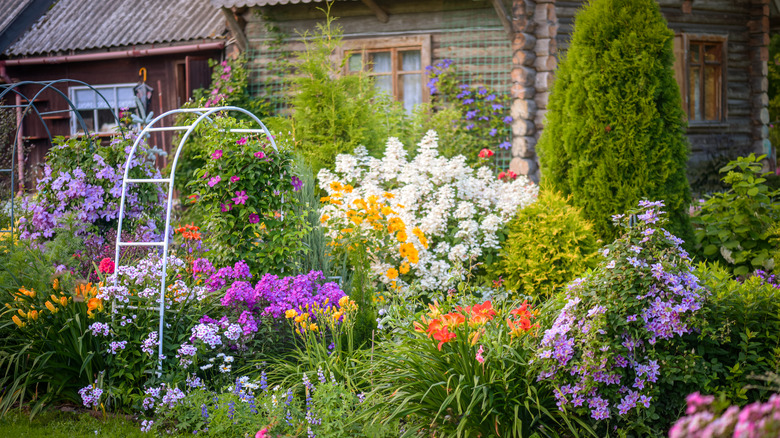Why You Should Think Twice About Planting Flower Beds Against Your House
Flower beds add a beautiful and inviting warmth to any home. Unfortunately, planting them right next to your house can cause issues that may affect the structural integrity of your residence, resulting in costly repairs or even devaluing your property. One reason for this is that some plants have extensive roots that can grow over time. To the naked eye, it may seem like your flowers are flourishing, but beneath the surface, the roots of your plants may be growing into the foundation of your home, creating cracks and potentially compromising the stability of your house. For this reason alone, it may be better to consider an alternative location in your yard to cultivate your flower garden.
Another significant reason to avoid planting flower beds against your home is the potential for moisture problems. Many flowers require frequent watering to thrive. However, this can cause issues for your foundation, as the constantly wet earth may lead to dampness, cracks, or other damage. If you live in an area that is already prone to flooding, adding additional moisture to the soil around your foundation may strain the structure or any drainage system that you have in place. Moreover, wet soil attracts certain pests, including termites and ants, both of which can cause extensive damage to your home. Consequently, if you're thinking about where to plant next season's flowers, do so away from the perimeter of your house.
Downsides for your flowers
While planting your flowers next to your home can cause issues for the structure of your property, it can also could limit the growth of your flowers and negatively affect their health overall. By planting your flowers against a wall, you limit the amount of sunlight that they have access to throughout the day, as the structure of your home will cast a shadow over them for part or much of the day. As a result, the lack of sunlight can lead to stunted growth. Also, the lack of sunlight can increase the chances of fungal diseases because damp, shaded areas are a breeding ground for these problems.
Lack of adequate sunlight may prevent your flower garden from thriving. Again, this is due to too much moisture in the soil. Oversaturated soil can lead to root rot, which will inevitably cause your flowers to die. At the same time, planting flowers against a building limits access to wind and airflow, exacerbating the issue of damp soil by trapping water and preventing it from drying out properly. Consequently, your flowers are unlikely to thrive. Finally, planting flowers against a building will limit the access you have to them for care and maintenance. Pruning, weeding, and fertilizing may become more difficult because you lose access to one side of the garden, making it difficult to thoroughly care for your flowers throughout the season.
Where to safely plant your flowers
Right against your home is not the best place to plant your new flower garden. To protect the structural integrity of your house and the health and vitality of your plants, it's a better idea to plant them in a spot in your yard that has access to key resources your flowers need to thrive. Many flowers need full sunlight, so choosing a spot that has sun throughout most of the day is a much better choice. However, some flowers have specific light requirements, and it's a good idea to check whether they'll fare better in soft morning light or hot afternoon light. Check with your local nursery to determine what's best for your flowers.
Another important component is adequate drainage. Your flowers likely have delicate roots that will decay with too much moisture, so it may be a good idea to consider container planting or raised-bed planting if the natural soil of your property does not drain well. Alternatively, you can supplement the soil of your flower bed with a healthy mix of compost or sandy loam. These options will help provide your flowers with well-draining soil and the nutrients they need to thrive. When choosing a garden spot, consider airflow as well. Planting flowers between dense shrubs will hinder their ability to flourish.


